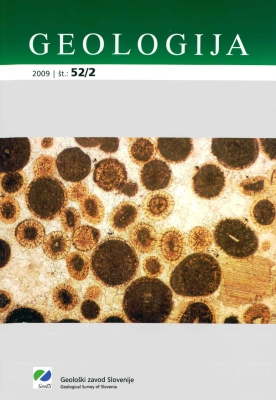Integrirani pristop k določanju vodovarstvenih območij
DOI:
https://doi.org/10.5474/geologija.2009.017Povzetek
Zaščita vodnih virov igra pomembno vlogo pri zagotavljanju zdrave in zanesljive oskrbe prebivalstva in industrije s pitno vodo. Zaščita virov pitne vode običajno obsega aktivne in pasivne zaščitne ukrepe. Pasivni ukrepi, ki se sestoje iz zaščitnih območij, ki obkrožajo zajetje, predstavljajo enega najbolj pogostih ukrepov za zaščito. V članku je prikazano kako je zaščita vodnih virov implementirana na podlagi evropske Okvirne direktive o vodah. Zaščitna območja temeljijo na klasifikaciji virov pitne vode. Razdeljeni so na dve skupini; podzemna in površinska vodna telesa. Ti dve glavni skupini pa sta nadalje razdeljeni na podskupine; podzemne vode na medzrnske, kraške in razpoklinske vodonosnike, površinske vode na stoječa in tekoča vodna telesa. Za vsako od vodnih teles so definirana najožje, ožje in širše območje. Širše območje je opredeljeno kot celotno napajalno zaledje. Znotraj najožjega območja je določeno območje zajetja, ki mora biti zaščiteno pred kakršnim koli posegom nepooblaščene tretje osebe. Zaščitna območja v medzrnskih vodonosnikih so določena na podlagi izohron in časov dospetja. Kraški vodonosniki so zaščiteni na podlagi intervencijskih časov in stopnje zakraselosti napajalnega zaledja. Razpoklinski vodonosniki so zaščiteni na podlagi hitrosti toka podzemne vode, če je tok laminaren, se uporabijo metode za medzrnske vodonosnike, v nasprotnem primeru pa metode za kraške vodonosnike. Pri površinskih vodnih telesih so uporabljene metode razdalj, metode izohron, metode razredčenj ter metode intervencijskih časov.Prenosi
Kako citirati
Brenčič, M., Prestor, J., Kompare, B., Matoz, H., & Kranjc, S. (2009). Integrirani pristop k določanju vodovarstvenih območij. Geologija, 52(2), 175–182. https://doi.org/10.5474/geologija.2009.017
Številka
Rubrika
Članki

